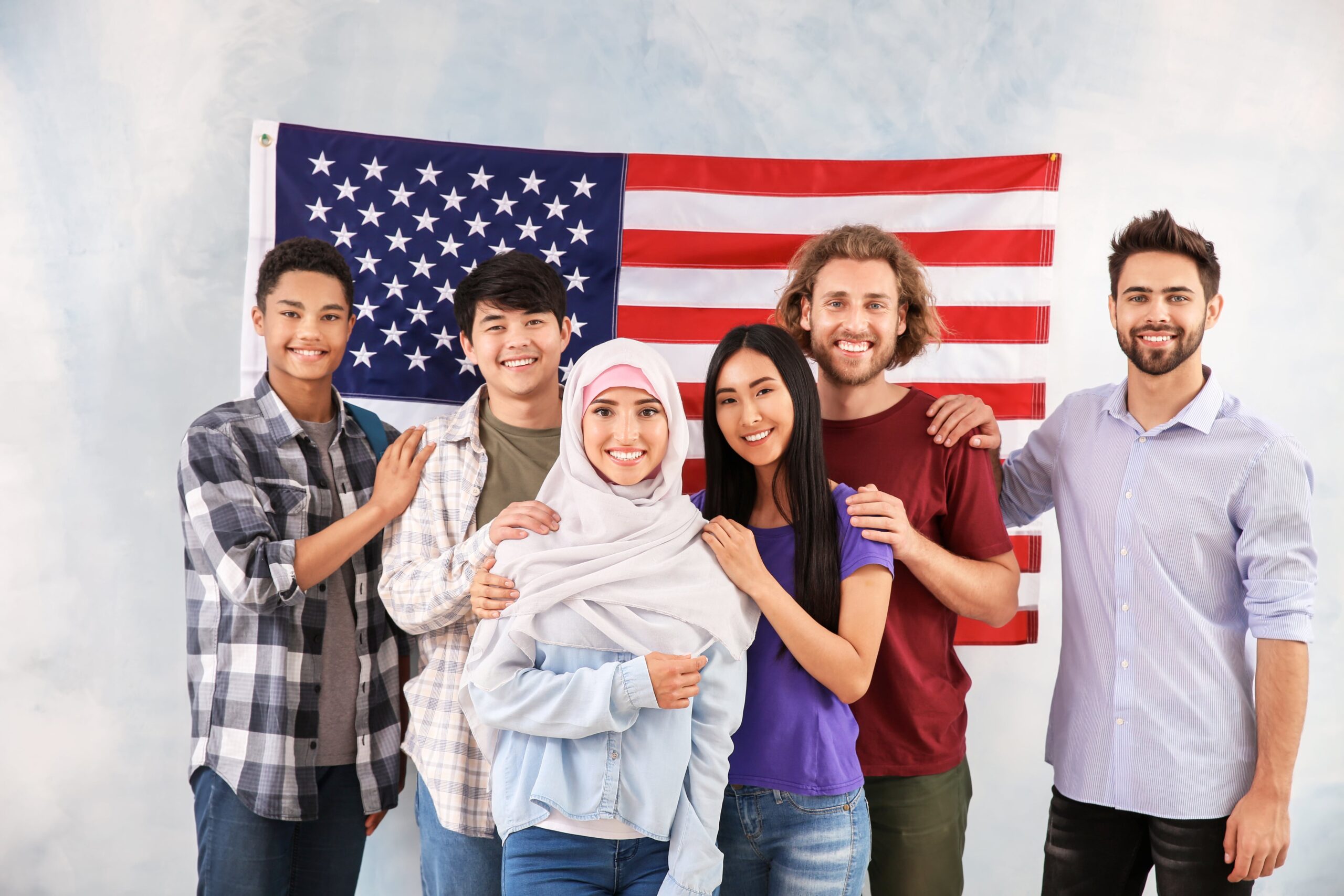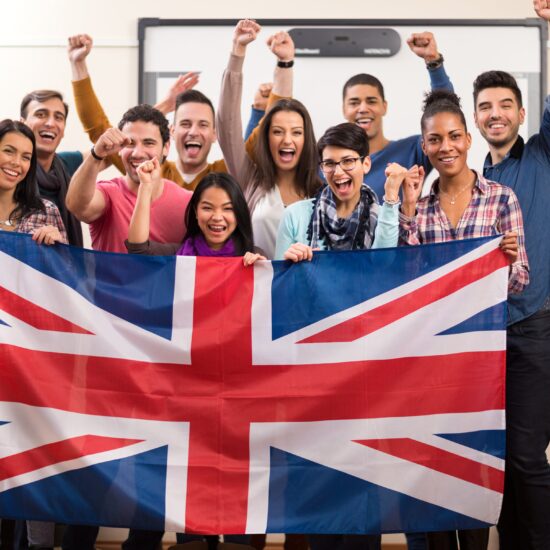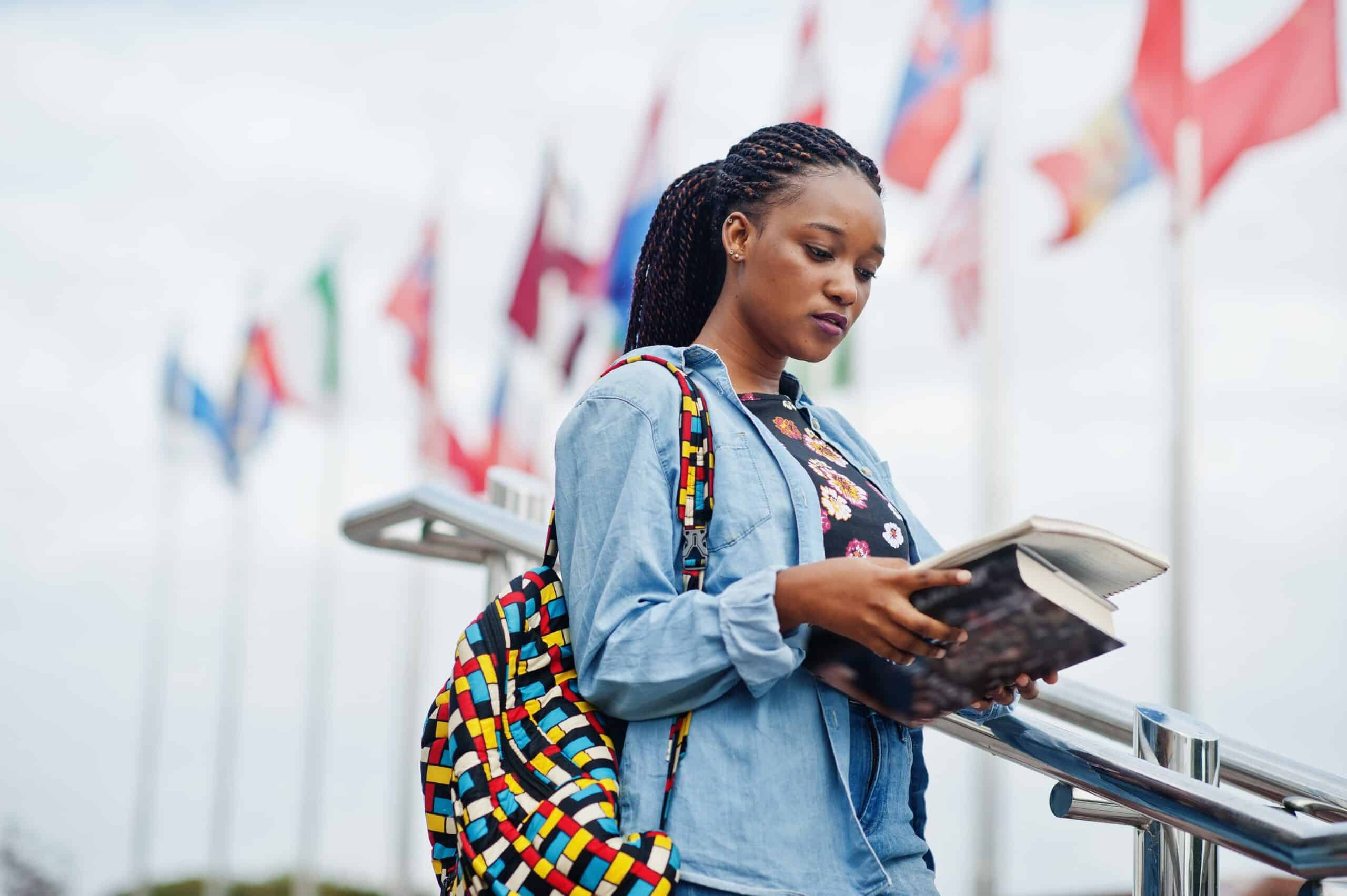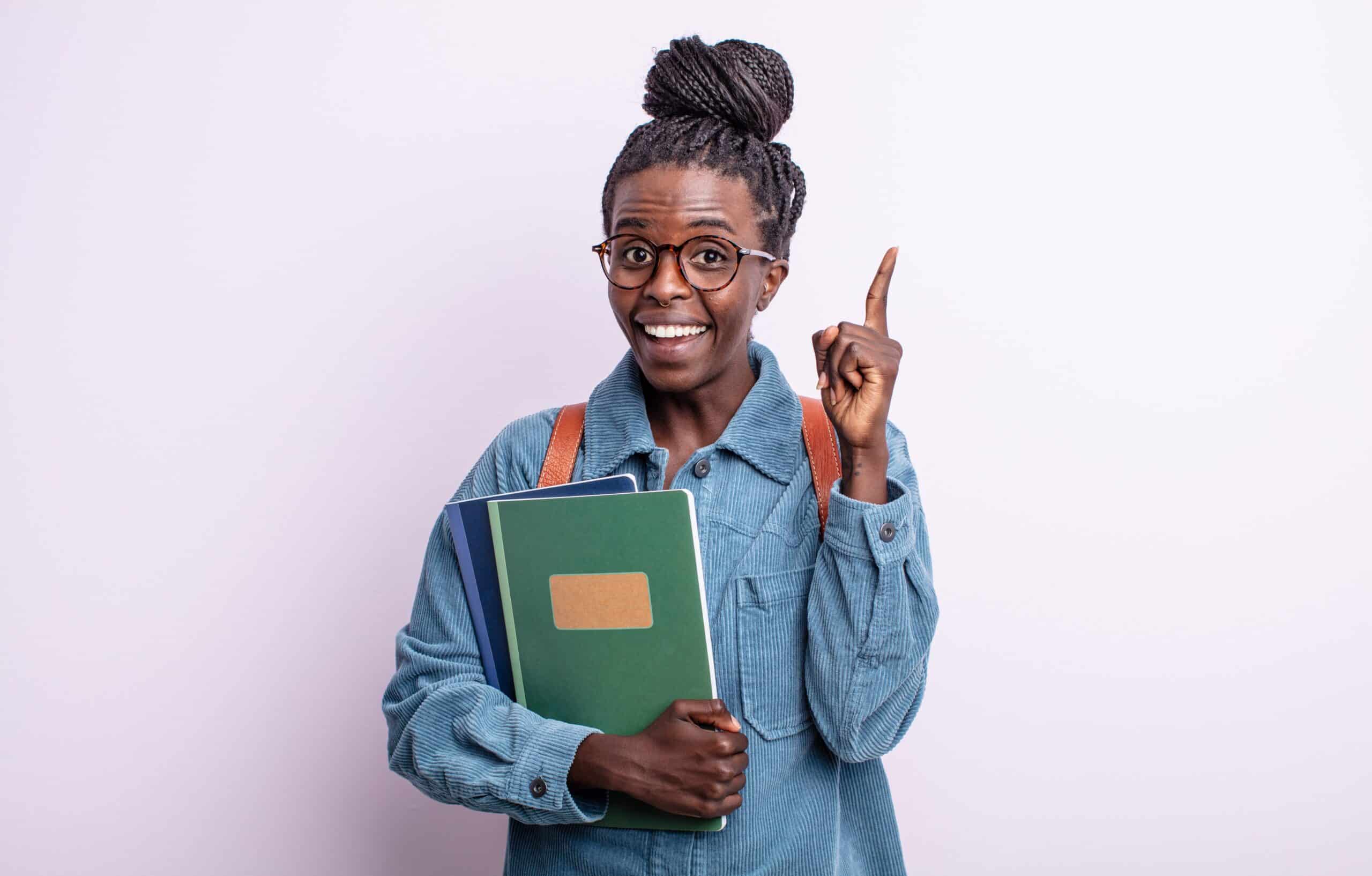
US Student Visa: 9 Guide for International Students
In this guide, we’ll go over the fundamentals of visas and how to obtain a US student visa to study in the United States. We’ll also provide you with a few pointers and resources to help you through the visa application process.
Every year, a large number of international students apply to US universities in order to study full-time in the US. However, in order to attend school in the United States, you must have more than just good grades you must also have a US student visa. Unfortunately, obtaining a visa can be a difficult process, which is why we’re here to assist. Before applying for a US student visa, all applicants must be accepted and recognized by US institutions.
ALSO READ: Top 5 Reasons to Study in the United Kingdom as an International Students
What Is a US Student Visa?
To legally attend school in the United States, all international applicants — those who do not have US citizenship or permanent residency — must first obtain a US student visa. This international student visa allows you to stay in the United States for a short period of time in order to attend an approved school, language program, or academic exchange program.
When you finish your program, your student visa expires. You must leave the United States at that time. (However, you may return to the United States later as a tourist or on another visa, such as a work visa.)
Type of US Student Visas
In the United States, there are several different types of US student visas available. Here are the type of US student visa
1. F-1 Visa
An f-1 visa is a type of Us student visa that allows you to travel to the United States. In the United States, the F1 visa is the most common type of student visa. If you wish to study in the United States at an approved institution, such as a recognized American college or university, a private secondary school, or an approved English language program, you’ll need an F-1 visa.
An F-1 visa is required if your course of study exceeds 18 hours per week. F-2 visas are available for spouses and children of F-1 visa holders. Please keep in mind that while spouses are not permitted to work, they may join their partners and apply for a visa to work or study in the United States.
2. Exchange Visitors: J-1 Visa
The J-1 Exchange Visitor Visa is designed for students who are engaging in a study abroad program. The J1 Visa is also popular among working professionals on exchange programs. As a result, the visa is known as a Visitor Exchange Visa.
With a J1 Visa, you could study for up to ten months. This would mostly benefit students who want to undertake research. J-2 Visas are issued to spouses and children accompanying J-1 Visa holders. Please keep in mind that if permission is granted ahead of time, spouses can work.
3. M-1 US Student Visa (NonAcademic/Vocational)
An M-1 visa is required if you desire to pursue non-academic or vocational study or training at a U.S. school. The only difference is that M1 visas are time-stamped, and students are not allowed to stay longer than allowed. Those seeking non-academic degrees to advance their careers are granted M-1 visas.
The SEVIS fee has increased to $350. (INR 26,256) (INR 26,256) (INR 26,256) (The MRV Fee (Visa Application Fee) is now $160. (INR 12,003)
Fee for SEVIS
Fees for Visa Applications F1 $350 $160 J1 $220 $160 M1 $350 $160
The following methods of payment are accepted for the SEVIS fee:
Use a credit card
Demand Draft/Money Order
Payment will be made in US dollars at the bank’s current exchange rate.
The following methods of payment are accepted for the Visa application fee:
NEFT is an acronym for National Electronic Funds Transfer.
IMPS stands for Instant Money Transfer via Mobile.
Payable in Indian Rupees (INR) at the Consular Office’s set exchange rate.
How to Apply for US Student Visa
Here’s a quick explanation of how to apply for a US student visa. Continue to read!
1. Apply to and Be Accepted by a US School
The first step is to apply to (and eventually be admitted to) a US university. Most full-time undergraduate and graduate programs in the United States require applications by December or January of each year. Admission notifications are typically sent out in March and April.
As previously stated, the schools to which you apply must be approved by SEVP. Use the SEVP school search tool to find a SEVP-approved school or to confirm that the schools you’ve chosen are indeed certified by SEVP.
You will be enrolled in the SEVIS system after you receive your admission letter from the college. You will receive a SEVIS-generated document called Form I-20 if you are eligible for an F or M visa, and Form DS-2019 if you are eligible for a J visa.
Most J-1 students will apply for exchange programs through their home institutions. On the official J-1 visa website, you can also look for designated sponsor organizations.
Select your subjects and universities.
Include your educational credentials.
Fill in the blanks with your and your family’s financial information.
2. Get Form I-20 or DS-2019 From Your School
When you are admitted to a school, you will be given one of two forms: Form I-20 (Certificate of Eligibility for Nonimmigrant Student Status) for F-1 and M-1 students, and Form DS-2019 (Certificate of Eligibility for Exchange Visitor (J-1) Status) for J-1 students.
The appropriate form will be mailed to you by your school. Your SEVIS ID, school address, and other important program information will be included on your form. This form will be required for your visa interview (detailed in step 8) as well as to pay certain fees (which we discuss next in step 3).
3. Pay the SEVIS fee
You must pay the SEVIS fee at least three days before submitting your application for a US visa. You have the option of paying it online or in person. Fill in all required fields exactly as they appear on your I-20 or DS-2019 form. Once you’ve completed your purchase, it’s a good idea to preserve a copy of the payment confirmation from the website.
4: Locate the nearest US Embassy or Consulate.
You must apply for an international student visa at your nearest American embassy or consulate (ideally, in the city or region in which you live). The US Department of State allows you to search for US embassies and consulates online.
Be aware that the process for obtaining a student visa in the United States may vary slightly depending on the embassy through which you apply. This means that you may be required to submit additional documentation with your visa application at some embassies. For more information on what you’ll need to submit, visit your embassy’s official website or contact them directly.
4. Locate the Nearest US Embassy or Consulate
You must apply for an international student visa at your nearest American embassy or consulate (ideally, in the city or region in which you live). The US Department of State allows you to search for US embassies and consulates online.
Be aware that the process for obtaining a student visa in the United States may vary slightly depending on the embassy through which you apply. This means that you may be required to submit additional documentation with your visa application at some embassies. For more information on what you’ll need to submit, visit your embassy’s official website or contact them directly.
5. Fill out the Application for a Student Visa in the United States
In order to apply for a student visa in the United States, you must fill out the DS-160 form. This DS-160 form needs to be filled out online. Make sure you have all of the documents and information you’ll need to complete the visa application form.
Make a note of your application ID when you’ve completed the form. This ID will allow you to access your information at any time. Name and birthday are required to complete your DS-160 form.
Address and phone number
Your passport details
Study trip plans details
Contact list
Information about one’s family, job, and education
Security, background, and medical health information
ID for SEVIS
The course of study in which you wish to enroll (as printed on the I-20 or DS-2019 form)
Answer all of the form’s questions thoroughly. The responses must be correct. Because any inaccuracies or discrepancies in the information provided may have an impact on the interview process and necessitate rescheduling.
You must electronically sign the form after completing it by clicking the “Sign Application” button. Following the submission of the final application, a confirmation page containing a barcode, barcode number, and application ID number will be sent. Take a copy of the confirmation document with you
6. Payment of the visa application fee
The visa application fee is referred to as the Machine Readable Visa (MRV). It is a government-mandated visa processing fee that must be paid regardless of whether your visa is issued or not. The MRV fee is non-transferable and non-refundable, and the receipt issued after paying the MRV fee is known as the MRV Receipt number.
Payment options for the application fee include:
In-person at a bank that has been approved.
Make use of your phone.
On the internet (you must print your receipt).
7. Schedule and attend your visa US interview
The final step in obtaining a visa is to attend a visa interview. You can schedule your interview online or by calling your nearest US embassy or consulate. Remember that you must pay the MRV fee before reserving an interview time because your MRV fee number will be required.
You can schedule an appointment with the US consulate or embassy to apply for a US student visa after receiving your SEVIS form and paying the SEVIS fee. Visa processing times may differ from time to time. As a result, applying as soon as possible is critical.
Here is a checklist to help you stay on track for your I-20 certificate for your US Visa Application:
* The institute’s admission letter.
* Academic credentials as well as TOEFL, SAT, GRE, GMAT, or LSAT test scores.
* DS-160 form
* A current passport.
* Two passport-size photographs
* The MRV fee.
* Payment of the SEVIS fee has been received.
* Your DS-160 confirmation page, printed
*Your I-901 SEVIS fee confirmation page, printed
* Your receipt for the visa application fee payment (this is only required if you paid the application fee before your interview)
* Form I-20 for F/M/J students, or Form DS-2019 for J-1 students (bring the original form, not a copy!)
Interview wait times differ depending on the embassy. Visit the US Visas website to find out how long it will take to get a visa from your embassy.
Gather the following items and information before your interview:
Transcripts from all colleges/universities you’ve attended
Diplomas/degrees from previous high schools/colleges/universities
Test results that are standardized (if required by your US school)
Evidence of sufficient funds
Proof of your intention to leave the United States at the end of your program
You will be subjected to a security check and asked to provide digital, ink-free fingerprints shortly after arriving for your interview.
8. Pay the Visa Issuance Fee
After being approved for a US student visa, some students must pay a visa issuance fee. Whether or not you must pay this fee is determined by your nationality and your country’s reciprocity agreement with the United States. The US visas website has a chart that you can use to determine whether you need to pay a visa issuance fee.
9. Receive Your Visa Approval
Once you’ve completed all of the above steps and have been approved for an international student visa to the United States, your embassy will return your passport to you, complete with your new visa. Please keep in mind that some embassies will require you to come in person to pick it up, whereas others will mail it back to you. The length of time it takes to process a visa depends on the embassy. You can get an estimate of how long it will take to process your visa by visiting the US visas website.
ALSO READ: 6 Reasons Why Studying in Ireland the Best Option
What to Expect After Graduation
F1 Student Visa holders are eligible for up to 12 months of OPT after graduation (optional practical training).
That means you’ll be able to work for a year after completing your education.
It is a short-term work permit that allows students to gain practical experience in their field of study.
If you want to keep working in the United States, you’ll need to apply for a work visa. Even if you don’t have a job offer or haven’t applied for OPT, you can stay in the United States for up to 60 days after finishing your study in the United States course.
Do you have questions about how to pass the student visa interview? Continue reading to see a glimpse of it!
Suggestions for Your Student Interview for a Visa
Put on a suit or a dress for the occasion.
Be specific when responding to questions.
Bring your bank statements or proof of employment.
Provide specifics about your study plans.
Keep your cool while remaining professional.
Examples of Visa Interview Questions
Why did you choose to study in the United States overworking in your home country?
What are your exam scores (GRE, GMAT, SAT, TOEFL, IELTS), as well as your GPA?
Will you return to your home country after graduation, or will you remain in the United States?
When studying in the United States, you must follow the following rules:
All of your exams must be taken and passed.
If you are having academic difficulties, you should contact your designated school official (DSO) right away.
If you genuinely think you will be unable to complete your course by the deadline specified on your Form I-20, please contact your DSO and request a program extension.
Each term, you must complete an entire course of study. If you are unable to study full-time, please notify your DSO as soon as possible.
You may not drop an entire course of study without first consulting with your DSO.
ALSO READ: 6 Triple-accredited business schools in the UK for international students
FAQs
Q. What Happens If My Visa Application Is Denied?
If you do not meet the student visa requirements for the United States and your visa application is denied, the decision is final, and you will be unable to appeal.
The good news is that you can reapply and request that your ineligibility be waived.
You must find out why you were denied a student visa to the United States.
For example, if you are refused because you cannot demonstrate the financial means to pay for your education, you will know what you need to change the next time. Many visas are denied because the required paperwork for a student visa in the United States is missing or incomplete.
Q. How long does a student visa last in the United States?
F1 students may stay in the United States for up to 60 days after completing their academic program unless they have applied for and been granted permission to stay and work under the OPT Program.
M1 – This is a non-immigrant permit that is valid for one year. Students, on the other hand, may request an extension of up to three years.
M1 visa holders are only permitted to study part-time and for a maximum of six months.
Q. How long is an F1 visa valid for?
F-1 student visas are usually valid for five years from the start of your studies.
Q. Is it difficult to obtain a US student visa?
A student visa for the United States is not difficult to obtain, but you must follow all student visa regulations for the United States and allow plenty of time to complete and submit your documentation.
At silvercloudtravels, We will walk you through the US student visa application process. Just contact us by visiting our website, www.silvercloudtravelsng.com today. We’ll take it from there.
ALSO READ: Study in Canada: 10 Tips to Choose a Study Program for International Students





